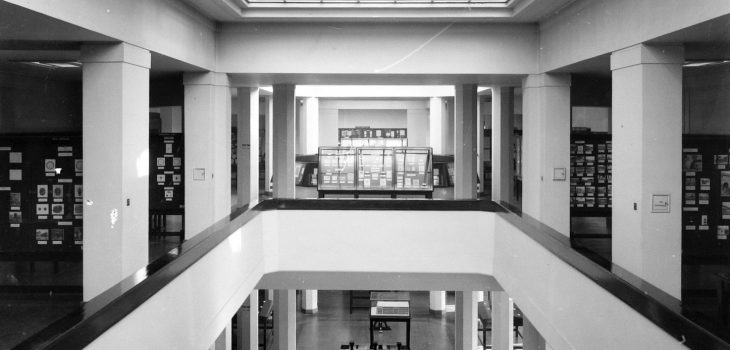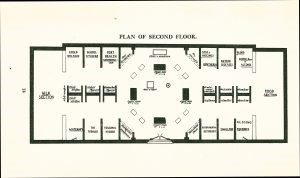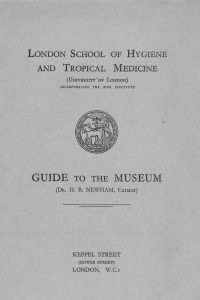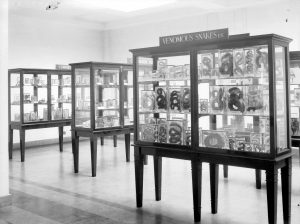The museum is no longer with us here at LSHTM, but at one point it held significant holdings relating to public health and tropical collections. The museum covered two floors above the library (which included Public Health and Tropical Medicine) and a small part of the basement (Sanitary Engineering). The museum also had displays devoted to Sir Ronald Ross and Sir Patrick Manson (as pioneers of Tropical Medicine) and who were greatly involved with the early history of the School.
Early in the museum’s history, the museum even had a number of ‘leading firms’ whose business was concerned with Public Health and who presented exhibits of educational value.
During the Second World War, a bomb struck the school. While (thankfully) there were no fatalities, a significant portion of the museum’s artefacts, collections and teaching aids were destroyed. This is especially ironic because the artefacts were stored in the basement to keep them safe during the war, but had they remained in their original locations within the museum, many items probably would have been saved.
The museum did not fully recover its original use after the war, and the permanent exhibits were eventually replaced with temporary exhibitions relating to topical subjects. By the 1960s it was felt that the museum space would be better suited if it were to accommodate teaching or research space, and during a redevelopment which included adding additional storeys to the School, the museum disappeared from everyday sight.
However, this is not the absolute end of the museum’s story, and out of sight is not always out of mind. 17 years ago, the archive service was created at LSHTM which preserves and offers access to historical collections. Some of the museum items have since been transferred into the archive, such as Sir Patrick Manson’s mosquito box, and a crescent dissecting microscope. While the museum is no longer on site at LSHTM, its history has not been forgotten.
This history is important to LSHTM, as providing access to collections that are relevant to both the School and the history of medicine has been a priority since the School opened on Keppel Street; firstly with the museum and secondly with the archive service. In honour of the long history of preservation of historical collections at LSHTM, a great congratulations indeed to the Archive Service for 17 years of continuing the preservation of history at LSHTM.
For more information the archive service or any of the collections, please contact archives@lshtm.ac.uk










